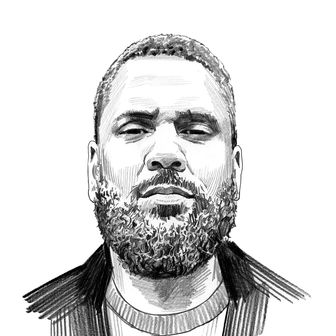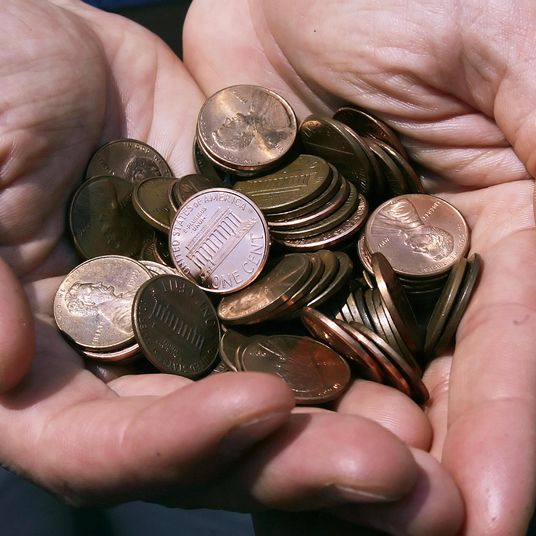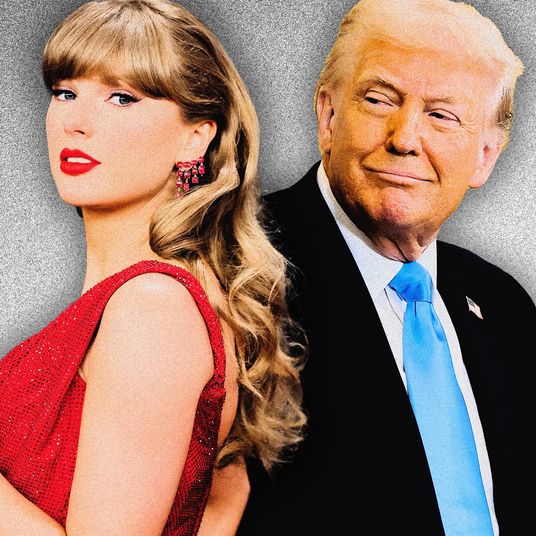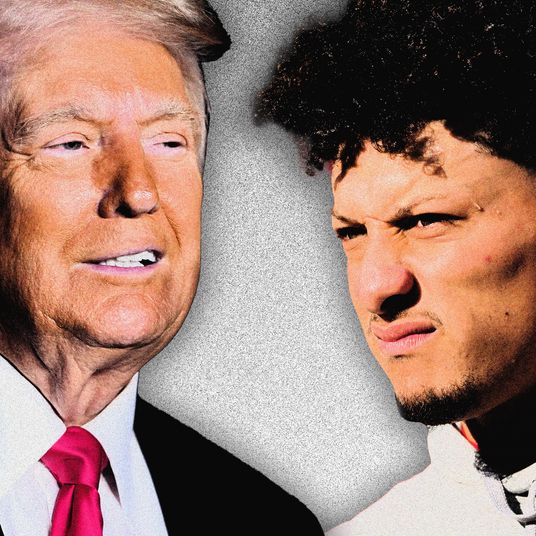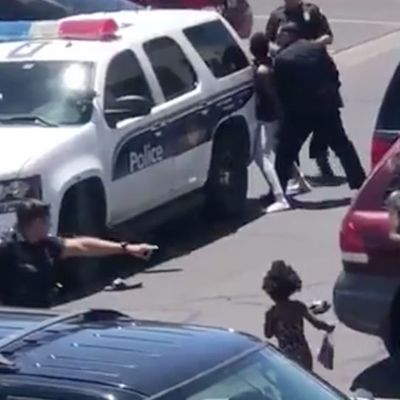
Video was made public over the weekend showing Phoenix police officers threatening to shoot members of a black family, which included a child and a toddler. The incident occurred on May 27, when the 4-year-old daughter of Dravon Ames and Iesha Harper allegedly stole a doll from a Family Dollar store. (NPR reports that the child’s parents were unaware of the alleged theft.) Officers followed the family — Ames and Harper, who was pregnant, and their two daughters, ages 4 and 1 — to an apartment complex where the family’s babysitter lived. Officers are seen on cell-phone video shouting at the four to exit their vehicle. One is heard yelling, “Get your fucking hands up” and “I’m gonna put a fucking cap in you,” while another voice — perhaps of the same officer — is heard threatening, “You’re gonna get fucking shot.”
The profane tirades turn physical when one officer handcuffs Ames and another tries to yank the toddler from Harper’s arms. The officer with Ames shoves the 22-year-old father against a police vehicle, kicks his legs until Ames falls to one knee, and thrusts his elbow into Ames’s back. The officer with Harper is seen shouting and pointing in her face and pulling on the arm in which she is carrying her 1-year-old baby. He eventually permits the pregnant woman to hand her children to a bystander before arresting her. None of the family members is armed.
The confrontation has prompted a $10 million civil-rights lawsuit and apologies from Phoenix’s mayor and chief of police. According to the suit, the 1-year-old was injured when the officer tried to wrench her from her mother; the 4-year-old has been experiencing nightmares and wetting the bed out of distress ever since. As far as accountability, Mayor Kate Gallego has scheduled a public forum where residents can voice their concerns about the incident and called for quicker implementation of body cameras across the Phoenix Police Department — an odd solution given that visual evidence was not lacking here. Aside from that, it is possible that no further legal or administrative recourse will be forthcoming. Officers routinely skate for killing people. Why would black Phoenicians expect them to be held accountable for merely threatening to kill?
Official accountability aside, the fear and mistrust sown in black communities via such incidents and the resulting mental-health downsides are well documented. The Phoenix debacle is further evidence that many officers’ interactions with black children in particular are rooted in intimidation and violence, with far-reaching side effects. By most definitions, the brutality applied disproportionately against black people by police across the United States is not “terrorism,” in a technical sense, only because it is permitted by law. That said, it serves a similar end: ensuring that its targets and their communities live in a state of constant stress, mistrust, and fear, practically from the cradle to the grave.
By most measures, Ames and Harper are lucky to be alive. The wealth of instances where similar interactions have ended with an unarmed black person dead at the hands of police hints at how easily the encounter could have turned fatal. The fear generated by this possibility is not a matter of probability. Like most Americans, black people are more likely to die from heart disease, cancer, or even violence committed domestically or on the streets than at the hands of a police officer. But the peculiar nature of law enforcement’s relationship to black communities is what makes it so laden with fear. With the exception of Native Americans — who make up a much smaller share of the general population — black people are the most likely racial demographic to be harassed, brutalized, or killed by police in a given year. This can be attributed in part to the relationship’s long-standing function: During the lynching era — roughly the end of Reconstruction to the end of Jim Crow — the primary job of law enforcement, when it came to black Americans, was to contain them at the bottom of the racial hierarchy by enforcing laws designed to criminalize them, while ensuring that white people were not punished for murdering them or robbing them of their land and labor.
When black people fled the South en masse during the Great Migration to escape this treatment, the cities and towns to which they fled in the North, West, and Midwest greeted them with a presumption of innate criminality, driven in part by crime statistics that reflected the extent to which the most trivial aspects of their lives — including riding an empty freight train or “speaking loudly in the presence of white women” — had been transformed into crimes in the South. Police were used to corral new black residents into ghettos depressed by poverty and molded by desperation and limited avenues for mobility. Yet remarkably, the structural ills that were imposed on the black sections of these municipalities were cast as products of their residents’ own pathologies. To this day, many Americans remain convinced that the harsh policing that dogs black communities is a necessary response to something inherently wrong with black people. For those on the receiving end, the result is a state of terror. Terrorism works by convincing its targets that they are always being hunted — no matter where they are or what they are doing, their lives are out of their hands. Its aim is victory through fear. And what better way to ensure that people live in fear than to demonstrate that even the most minor transgressions — a 4-year-old’s supposed theft of a doll from a Family Dollar store — can result in their public execution?
The psychological fallout is demonstrated in the data: According to a 2014 study conducted by public-health researchers at Harvard and Boston University, incidents of lethal police violence precipitate a spike in what black adult respondents consider to be “poor mental health days” not just among people close to those victimized but their communities more broadly, judging by metrics established by the Centers for Disease Control and Prevention. The impact is racially asymmetrical: “Mental health impacts were not observed among white respondents and resulted only from police killings of unarmed black Americans,” the study reads. For black children, such negative interactions can be formative. A 2018 survey of research on the subject compiled in The Future of Children, a journal of the policy-research partnership between Princeton University’s Woodrow Wilson School of Public and International Affairs and the Brookings Institution, found that many black youth in Chicago view police as “a constant, inescapable, and unwelcome presence” in their lives. Interactions are marked frequently by officers exerting their dominance in the form of offensive questions and degrading directives, causing black children to feel powerless. As a result, by the time they turn 18, many of these youth have a bleak but well-earned outlook on policing: According to a 2014 survey by the Black Youth Project and the University of Chicago’s Center for the Study of Race, Politics and Culture, more than half of black people between ages 18 and 34 have experienced police violence or harassment or know someone who has. (Thirty-three percent of white respondents and 25 percent of Latino respondents had.) Fewer than half of black respondents said they trust the police, compared to 60 percent of Latinos and 72 percent of whites.
It remains incredible, given this documented mistreatment of so many black children by the police, that pundits and politicians continue to attribute negative disparities to some innate black defect — often located in the black family. Broken black homes are blamed for crime in black communities, with scant or ancillary mention of imposed poverty, the ills of segregation, or the role the state plays in rupturing said families using the criminal-justice system. Police violence is dismissed as subordinate to intraracial violence, or “black-on-black” crime — a phenomenon endemic, to varying degrees, within every racial group — as if the two were separate and distinct phenomena rather than twin products of racist policy. If these pundits are correct, then the May 27 incident in Phoenix might be cast as reasonable treatment for a 4-year-old alleged shoplifter, her pregnant mother, father, and 1-year-old sister. But if — as history and the evidence suggest — black families can more accurately be described as victims of violence than its root cause, then the Phoenix police were culpable in not just an overreaction but an act of terror.


